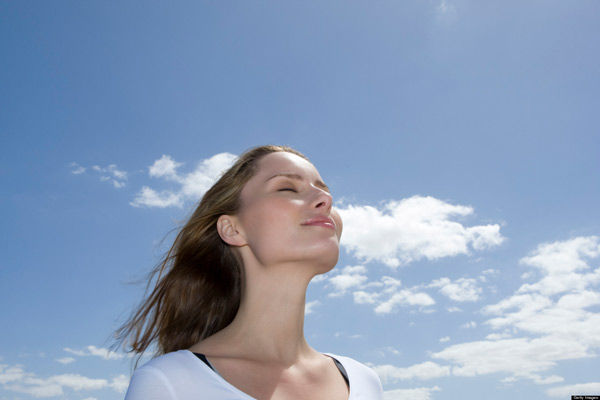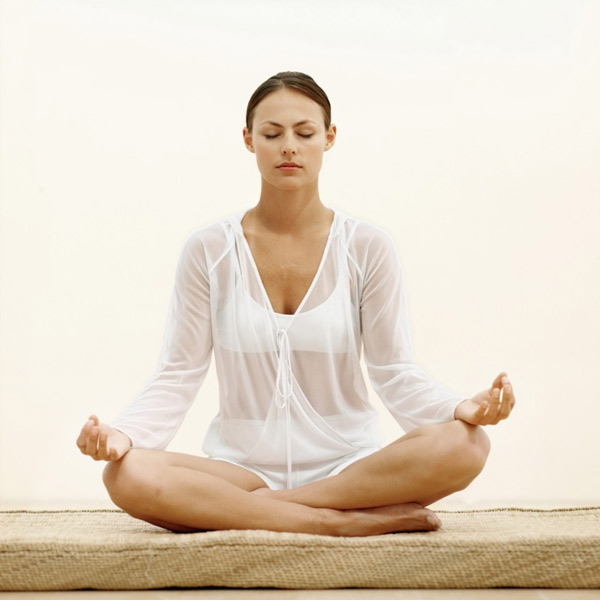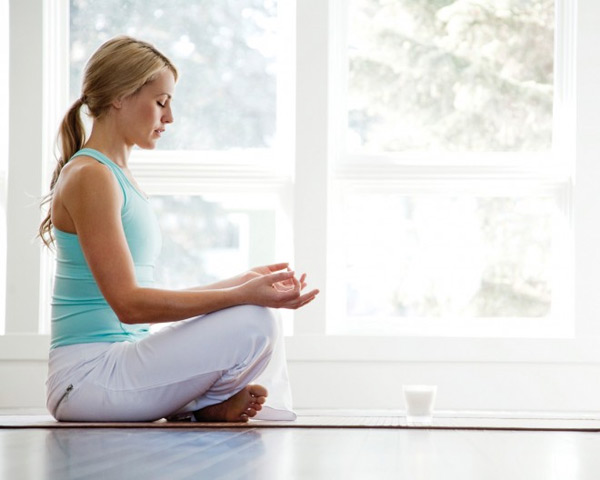
With the gentler, safer workouts emerging, there was a corresponding wider net thrown, enticing more people to the fitness movement-not just the young and hardy. At the same time, another social force fueled this more conscious attention to the whole body, and that was the graying of the population. People not only needed more attention paid to reducing their risks for chronic disease, they wanted to build cardio-respiratory endurance, musculo-skeletal strength, flexibility, and balance. And, they needed to de-stress from their tough workday, to find relief from an overcrowded schedule, and replace tension with relaxation.
As holistic classes flourished, AFAA introduced more continuing education programs that encouraged instructors to avoid exercising in a “disembodied” way, such as counting repetitions in a mindless way. The new holistic emphasis meant being mindfully present to the way our bodies move through space and learning to enjoy the process of attaining a relaxed mind, fit body, and freer spirit. Embracing holistic fitness requires that you reach toward the interior spaces that help you become a more authentic being.
Becoming a Holistic Fitness Instructor
There are many resources for you to adopt holistic teaching skills and movement styles. First, your own mindset might need an adjustment. Be prepared to learn in multiple ways:
(a) intuitively (with your right brain),
(b) academically (with your left brain),
(c) kinesthetically (by going through the motions), and
(d) through sensory means (sight, sound, smell, taste, touch).
Enhance your auditory holistic skills by listening to different kinds of music, drumming, and chanting.
You might also adopt a daily routine of stress management through the following.
Meditation Guided Imagery
- *Visualization
- *Positive self-talk learned through audio programs and books Yoga
- *Relaxation methods Breath work sessions
Consider seeking out workshops in the following techniques. Then pick and choose from what you learn, adding to your personal “toolkit.” Holistic fitness is ultimately creative, allowing you to absorb information from various innovators in the human potential field, and adapting the information with your own personal style.
- Feldenkrais Method
- Alexander Technique Somatic Education Continuum
- Rosen Bodywork
- Rolfing
- Massage Therapy
- Laban Movement Analysis
- Eastern Energy Systems: Tai Chi and Qigong
- Martial Arts: Tae Kwon Do, Aikido
- Components of a Holistic Fitness Class
The class itself can take any number of forms, for example, yoga, stretch, body contouring, mat work, even aerobics. Applying holistic principles is what transforms the class instruction, atmosphere, receptivity, and engagement.

Present Awareness: You want to make sure to avoid rushing into class last minute. Set the mood properly, allow people to get present. Shake off the stress of getting to class, and make several attempts to acknowledge their commitment to show up with eye contact, smiles, and gestures. Holistic classes have a sweet ritual feeling to them-intentional opening and closures. Then focus on present-time awareness. Learn to be here now, and keep redirecting your energy and attention to the present real-time focus.
Breathwork: Teaching proper breathing is essential to holistic fitness and overall wellness. Breathing rhythmically and taking note to not hold one’s breath is taught in all AFAA workshops. In holistic fitness classes, instructors can use the breath as a meditative mantra or focusing device to help participants notice their exertion and make adaptations. San Shin Kai is a meditative-breathing exercise at the start of martial arts classes that helps unify mind, body, and spirit, according to Carol and Mitchell Krucoff in Healing Moves.
Caring: Holistic fitness classes set a new benchmark for caring and compassionate, welcoming instruction. They create a “sacred space” of inner calm, and eliminate the intimidation factors so many participants unfortunately feel when they are newcomers in health clubs. Put out a warm, emotional welcome mat.
Cueing: Well-timed cueing is important in all group exercise. The cueing in holistic fitness classes is non-intrusive and pleasant. It is laced with rich imagery, allowing the participants to generate an integrated experience. It is smooth and seamless.
Grounding: Holistic instructors pay special attention to how they work with their centers of gravity and shift body weight. Learn to move from your center, also known as tan-tien in Eastern energy traditions. Pacing your movements with your breath, and speeding up and slowing down as needed to safely execute the movements will help you stay attuned to body-mind-spirit alignment.
Music: Music is an important motivating feature in all classes, and even more so in holistic fitness classes. From the provocative to the evocative, holistic music is usually free of lyrics, dance-oriented, primal, ethnic, New Age, atmospheric, and elemental. Check out the resources at the end of the chapter.
Variety: To awaken a holistic sense of the body in all its capacities, you will want to include a variety of movements: (a) large, (b) small, (c) fluid, (d) staccato, (e) sharp, (f) graceful, (g) spring-loaded, (h) relaxed, (i) sweeping, (j) syncopated, (k) dynamic, and (I) still. You certainly don’t need to perform all of them in each class, but the opposition tension that is generated with different types of movement can be a powerful tool for building confidence, endurance, strength, and flexibility. In addition, variety of movement styles creates opportunities for more flexibility in the neuromuscular response.
Visualization: Ask participants to be mindfully present to the way their bodies move through space. Teach them to look for the way a naturally spontaneous flow will arise.
Contributors to Holistic Fitness
Becoming a holistic fitness instructor is more of a lifelong journey than a one time accomplishment. As you learn to think about abandoning stale, customary, or rote ways of exercising, you will challenge yourself to find creative, all-encompassing movement styles and approaches. To do that, you’ll need solid mentorship. Take time to explore the following recognized fields of knowledge and expertise that comprise holistic fitness.

Peak Performance
Another contributing body of knowledge behind holistic fitness is the research supporting peak performances and flow states. Internationally recognized researcher Mihaly Csikszentmihalyi (suggested pronunciation: ‘chick-sent-me-high-ee’), authored Flow: The Psychology of Optimal Experience when he was chairman of the Psychology Department at the University of Chicago. His life’s work has been the study of states in which individuals are fully absorbed in an activity. That deep immersion allows them to have feelings of great satisfaction, in which the ego and typical moment-to-moment strategizing falls away. Time seems to be suspended. Csikszentmihalyi explains that athletes who have experienced flow states describe moments in which every action, movement, and thought follows smoothly from one sequence to another. Flow states occur in a variety of experiences from conducting a symphony orchestra to preparing a Thanksgiving meal. The one constant requires that the whole being is involved and all previously learned skills are tapped into effortlessly. Participating regularly in holistic fitness can certainly open a doorway for inviting more flow states into your life.
Positive Psychology
Traditionally, much of the psycho-therapeutic profession has focused on defining pathology and treating it for successful management of anxiety, depression, or neurosis. A new branch of therapy known as positive psychology attempts to help people concentrate on what is right about their lives.
Ecological Balance
As fitness instructors grow in appreciation of how health is both a personal and cultural creation, they naturally gravitate to a commitment between personal and planetary health. Become an advocate for dean air, water, and safe environments they go hand in hand with holistic fitness. Becoming engaged with holistic health challenges and possible solutions within your own communities is a first step toward creating sustainable ecosystems on every level (e.g., personal, communal, and planetary). Several health clubs are leading a green initiative, reducing their energy costs, using more natural light, bringing in plants, and starting recycling programs.
Spill-Over Effect
Some research reports a “spill-over effect” when people exercise; they address other aspects of their lifestyle diet, stress management, relationships, career goals-and start to clean up those areas as well. When you live a more holistic lifestyle, you have more physical and mental energy to tackle neglected areas. Increasing one’s commitment to a holistic development process can be accomplished by mapping out short- and long-term goals.
The Flow
Developed by martial arts master Victor Blome, the Flow provides participants with a biofeedback gauge in the form of a water-filled polyurethane sleeve that looks like a condom sized for a blue whale! As a motion awareness system, the Flow allows you to coordinate movements with rhythmic breathing until the flow of water becomes less unsteady and choppy, and actually starts to glide around you as your coordination and balance become freer and less rigid. Plow instructor Nancy Gillette, MS, an AFAA Advisory Board member, says that the Flow enables you to have a cardiovascular challenge, upper body-workout, moderate lower-body workout, while enjoying a liberating, moving experience.
Videos
Disclaimer
The Content is not intended to be a substitute for professional medical advice, diagnosis, or treatment. Always seek the advice of your physician or other qualified health provider with any questions you may have regarding a medical condition.